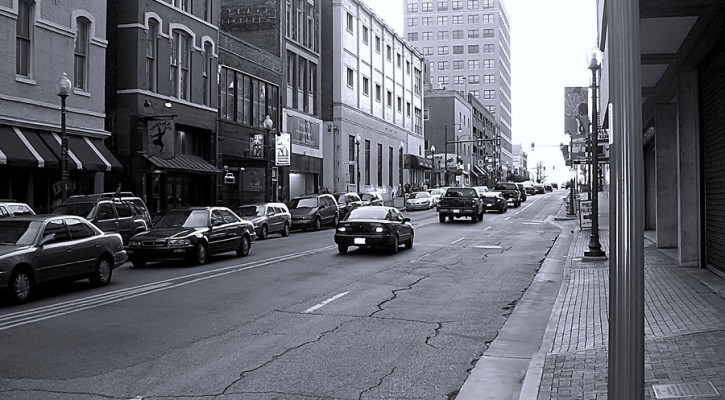
The Art of Parking
July 21, 2014
You may know how to drive, but do you know how to park? Parking is an essential skill. Without it, we’d be stuck on a perpetual drive, a never-ending commute that would quickly wear down that new-driver excitement. That’s why we’re here to cover all the basics when it comes to The Art of Parking.
There are only a handful of parking styles that most drivers must master. We’ll start with the easiest and work our way up:
The Driveway
Parking in a driveway is pretty straight forward. However, there are a few tips to consider before pulling in:
- Take a nice, wide turn into the driveway to avoid hitting the curb, the mailbox, or anything else on your way in.
- Try to park straight and centered to make backing out easier.
The Basic Parking Space
Parking in a basic parking space is usually a simple task. These spaces can be found in parking garages and parking lots. They are marked in front of corner stores, grocery stores and shopping centers, as well as at the park and at school… basically, they’re everywhere. When parking in a parking space, keep these tips in mind:
- Take a wide turn into the space for straight, centered parking.
- If another car is parked at an angle or is too close to the line, try to avoid parking right beside it. This will cause you to park off-center, causing the next driver to have to park off-center. Plus, if that car leaves before the you, then you will look like the person who doesn’t know how to park right.
- Be sure to pull all the way into the space so that your back end isn’t sticking out.
- Be careful not to pull too far up. You may hit the curb. If you’re really unlucky, you may catch your front bumper on the curb and cause serious damage. If you’re really, really unlucky, you may also damage the curb and have to give the store-owner your insurance information.
- Beware of ONE WAY markings. They can be marked with arrows on the asphalt or on signs.
- Drive slowly and carefully when looking for an open spot. Parking lots and parking garages are full of pedestrians, children, and other drivers. Most of these people are only half-way paying attention to their surroundings. The rest are completely oblivious.
The Street
Most street parking involves the dreaded Parallel Parking technique. This skill may be intimidating at first, but once you master it you will be able to park just about anywhere (without it, you will always have a hard time parking in urban areas).
Begin by practicing with cones or cardboard boxes in a private drive or empty parking lot. Once you have found a safe place to learn, try using this common parking technique: The “S” Method.
- As you pull up to the spot, slow down and turn on your blinker.
- Pull up three feet away from the car you want to park behind. Align your back tires with the other car’s back bumper.
- Put your car in reverse and turn your wheels all the way to the right.
- Slowly back up until you’re at a 45-degree angle. Then stop.
- Turn your wheels all the way to the left.
- Continue to back up very slowly until you are parallel with the curb.
This method takes a lot of practice to make perfect. Once you have it down, you should be able to park anywhere without holding up traffic.
The Hill
Sometimes, you will find yourself having to park on a hill. When this happens, it’s important to remember how to park on an incline safely and correctly:
- ALWAYS use your emergency brake.
- When parking upwards on a hill, turn your front wheels to the left.
- When parking downwards on a hill, turn your front wheels to the right.
By learning how to park quickly and correctly, you will feel more confident driving in new places and have more freedom to travel around crowded downtown streets.

The Parking Dilemma
June 25, 2014
Parking is a necessity in the trucking industry. Sadly, it’s also a scarcity. Parking shortages are a major problem in the trucking world. Without a place to park, there is no place to sleep, shower, or even use the restroom.
How can truck drivers ensure they have adequate parking when travelling over-the-road? How can they avoid breaking the law when it comes to HOS (Hours of Service) rules and regulations? It’s a tricky dilemma, but we have a few tips to help out all the weary drivers out there:
Plan Carefully. Know your route. Research truck stops, rest areas, motels and overnight parking. Then make a solid game plan that will enable you to find a parking spot before your daily hours run out.
Drive Early. In crowded cities, truck stops and rest areas fill up quickly. However, you can secure a parking space early if you start your day earlier. By waking up around 3 a.m. and finding a parking spot before 6 p.m., you will beat the rush and save a lot of time hunting for a place to stop for the night.
Don’t Count on Walmart. In the old days, Walmart was known for their overnight parking. Big lots, few curbs and a general respect for the people who delivered their goods made these grocery stores a go-to place for trucker parking. However, these days many Walmart parking lots have these signs posted throughout the property:
NO TRUCK PARKING
VIOLATORS WILL BE TOWED AT THEIR OWN EXPENSE
Even a quick stop for groceries has resulted in bad experiences for trucker Ray Earl Bishop Jr. and blogger for Overdrive Online Wendy Parker. The days of free camping (aka boondocking) at Walmart are over. It’s best to keep on trucking until you find a truck stop or rest stop.
Know the Sweet Spots. Have a look at our previous post: Truck Stops, Pit Stops and other Over-The-Road Sanctuaries to learn all about the best places to park across the U.S. Then, feel free to share your knowledge and comment to help us make this list more complete.
